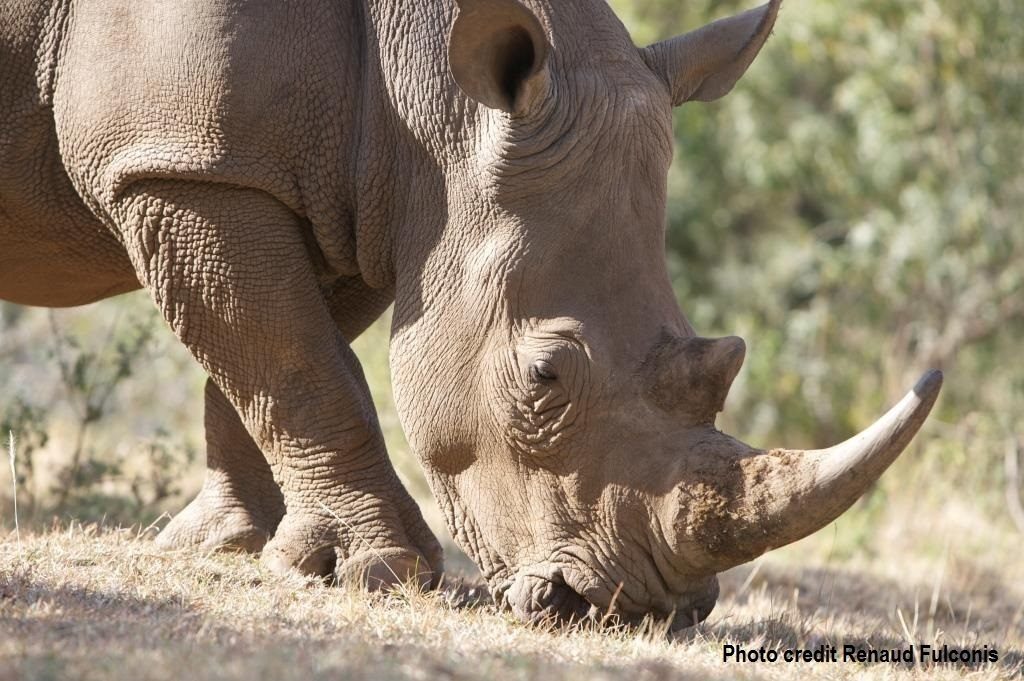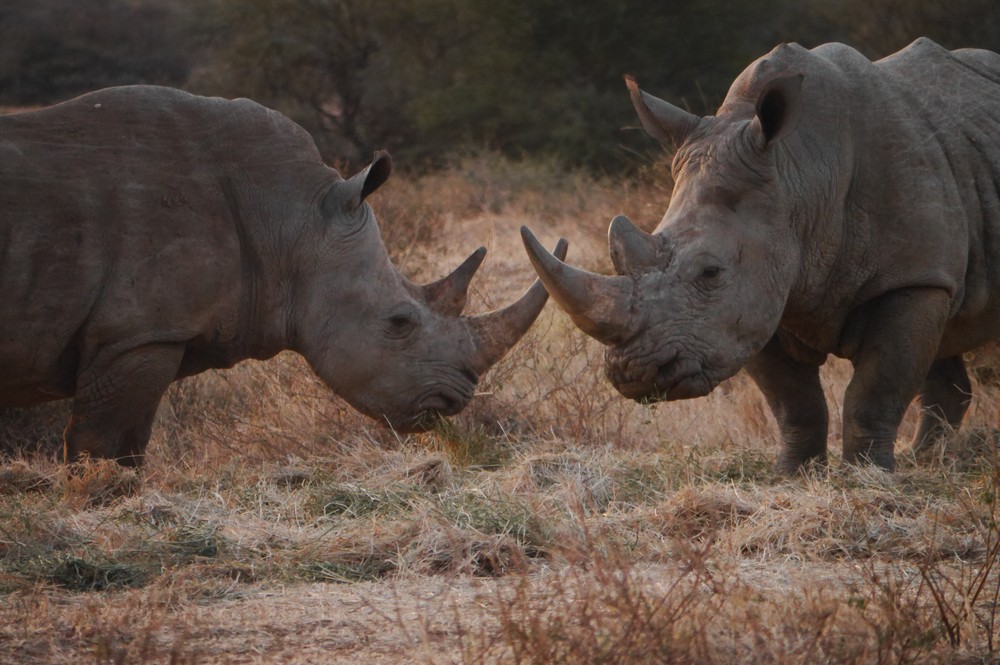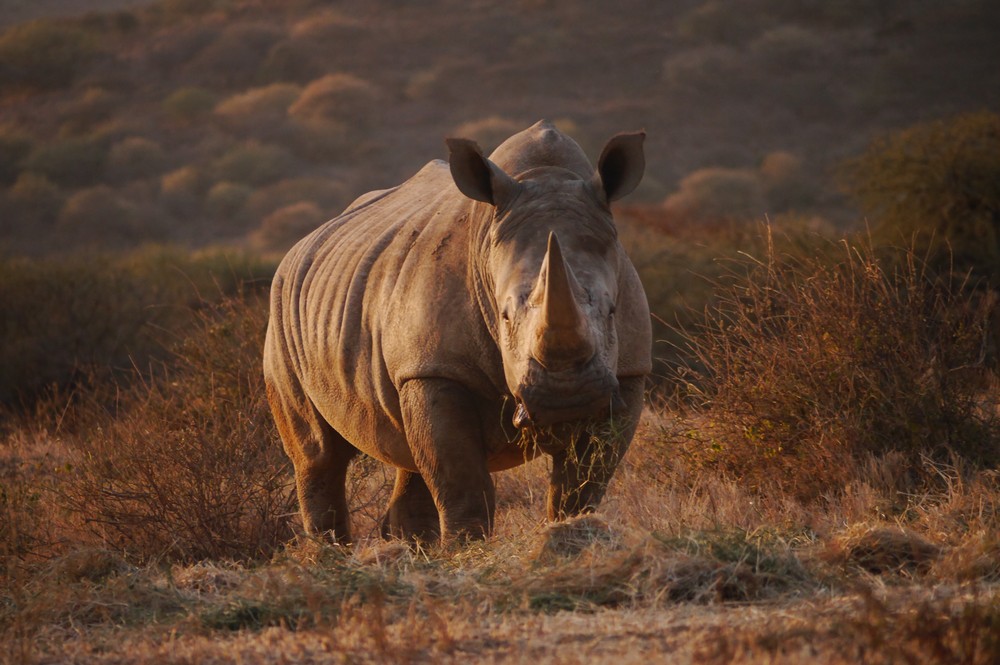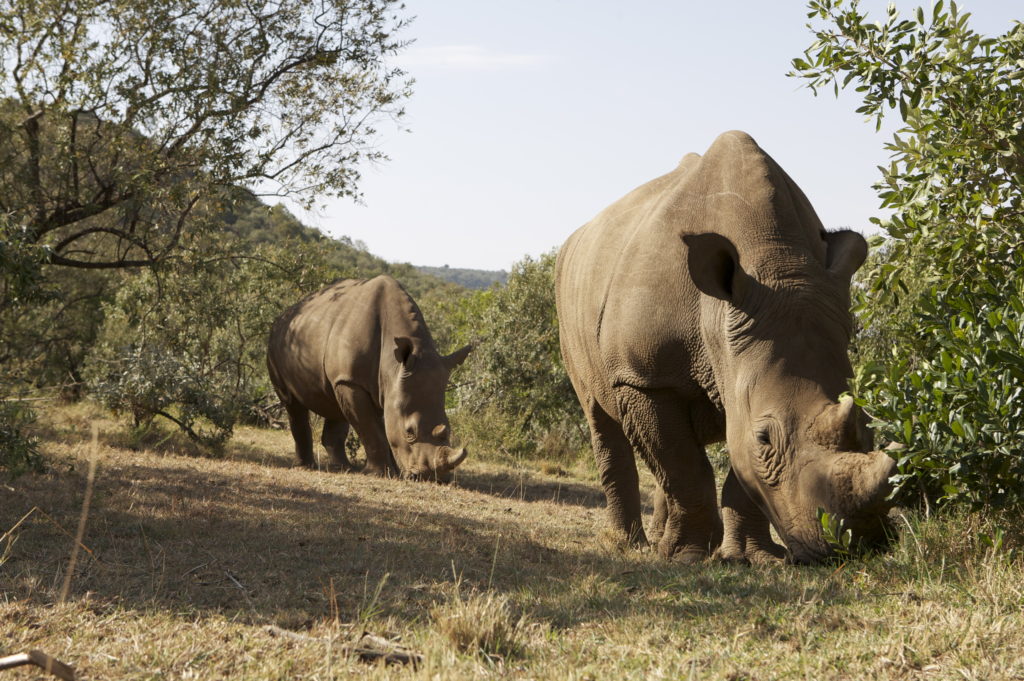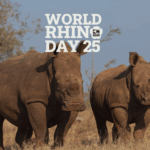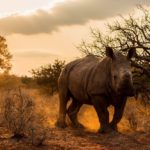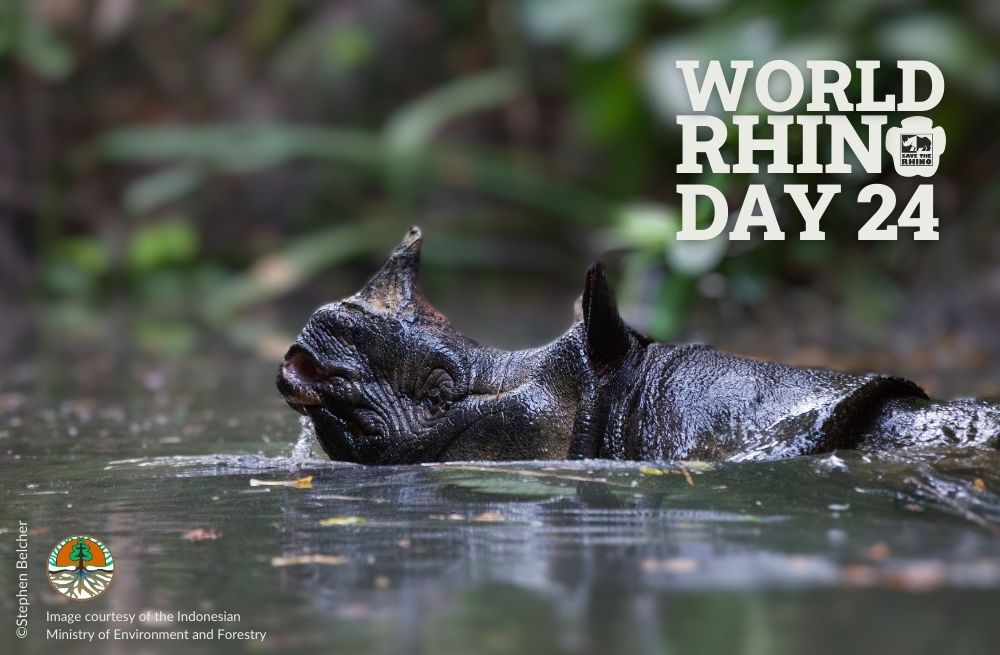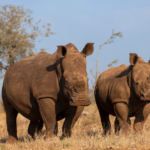White rhino
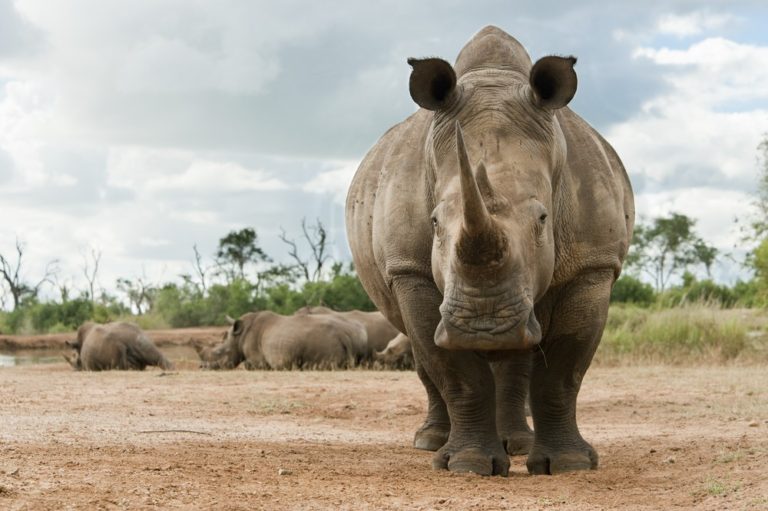
Fun fact:
There is actually no colour difference between the black and white rhinos species.
The white rhino is also known as the Square-lipped rhino due to the shape of its mouth compared with its African cousin, the black rhino.
There are two subspecies of white rhino:
Southern white rhinos: Ceratotherium simum simum
Northern white rhinos: Ceratotherium simum cottoni (only two animals remain)
Physical characteristics
- Size: the white rhino is the larger of the two African species. It has a bigger head, due to the muscles that support its neck, as the animal feeds from the ground with its head lowered for much of the day
- Weight: adult males weigh between 1,800 and 2,500 kg and females 1,800-2,000 kg
- Weight at birth: 40-60 kg
- Shoulder height: 1.5-1.8 m
- Skin colour: the colour of their skin is grey. There is no difference in the skin colour of white and black rhinos, despite their names
- Hair: White rhinos have hair only on ears, tail tips and eyelashes
- Distinctive characteristics: their outline is characterised by a pronounced hump. The head hangs down, low to the ground; they look up only when alarmed. White rhinos have two horns on the end of their nose. The front horn is usually much larger than the inner horn. Rhinos are known for their distinct ‘prehistoric’, solid look; an appropriate labelling for one of the oldest land mammal species in the world
Social behaviour and breeding
- Sociability: White rhinos are sedentary, semi-social and territorial. Adult bulls are basically solitary and associate only with females in oestrus. Stable groups (commonly known as ‘crashes’) of up to six animals can be commonly observed, (although this is sadly a rarer sight these days, due to poaching), while larger groups are the result of temporary aggregations, due to availability of food, watering, or resting conditions
- Sexual Maturity: females reach sexual maturity at around 6-7 years old, males at between 10-12 years old
- Male Territory: bulls’ territorial ranges are relatively small, averaging between 1-3 km2. The size depends on many factors, including the quality and availability of food and water in a particular area. Each territory is held by a mature male, often with between one and three resident satellite bulls. The territory owner ignores these satellite bulls, as long as they behave submissively. Territorial bulls are far more aggressive to foreign bulls than to resident satellite bulls
- Female Territory: females’ home ranges vary between 6-20 km2, and usually overlap several males’ territories. White rhino cows are rarely solitary. They associate typically in pairs, usually a female with her latest calf. A juvenile stays with the mother for around three years. When the mother calves again, it seeks another companion, preferably of similar age and the same sex
- Scent-marking: as with other rhino species, white rhino home ranges are scent-posted with dung heaps used by both sexes. The collective dung heaps, or middens, are usually located at territory boundaries and serve as the communication and marking points. All animals add their deposits there, but only territorial males scatter the dung with ritualised kicks and spray urine. Marking by urine spraying is mostly displayed along territorial boundaries
- Sounds and calls: White rhinos can communicate vocally, using a wide range of sounds from calf squeaking to snarling or wailing of adults
- Mating and courtship: when the urine test (sensed through scent glands) reveals a cow approaching oestrus, the territorial bull will join the female for up to 20 days. He at first accompanies the female by keeping a fair distance, until she comes into full oestrus and allows him to approach. The courtship lasts up to a day, characterised by the male resting his chin on the female’s rump and attempted mounting. Finally, the cow will stand still, with tail curled, and allow copulation. Mating is remarkably prolonged, lasting from 20 minutes to one hour
- Gestation and birth: White rhino have a gestation period of approximately 16 months. Records of captive breeding in zoos vary between 480 and 548 days’ gestation. Females usually give birth for the first time at the age of 6.5-7 years. The interval between calving is 3-4 years. Pregnant females will leave their crash shortly before the parturition and stay apart for several days afterwards. Calves stand up within one hour, immediately attempting to suckle. Mother and calf become inseparable; the calf usually moves in front of its mother and immediately responds to the mother’s behaviour. The calf begins grazing at two months, weaning occurs at around one year of age. The calf stays with mother for around three years
- Daily Activity: White rhinoceroses feed and rest alternately during day and night. In hot, dry weather they routinely rest during the hottest part of the day. Much of their resting time is spent wallowing to keep cool and to get rid of skin parasites. They need water for drinking every 2-4 days. If there is no wallowing place available, they will roll in dry dust
Other interesting facts
- Behaviour: rhinos tend to wallow in the mud, which serves as a cooling technique, effective sun protection and insect repellent. After wallowing, the visual colour of the animal inevitably matches the colour of the local soil
- Running speed: White rhinos are surprisingly agile and can run very fast, up to 40 km/h for short periods
- Senses: they have poor eyesight, but acute senses of hearing and smell
- Taxonomic classifications: in zoological nomenclature, white rhinos belong to the Order Perissodactyla – the “odd-toed” or “odd-hoofed” mammals, family Rhinocerotidae (Rhinoceroses). Front and back feet each have three toes, surrounding a soft and elastic sole, which helps to balance the heavy weight of the body evenly
- The horn: horns are used as weapons against predators and for dominance and threat displays in contact with other rhinos. White rhinos have two horns: The Northern White Rhino’s larger front (anterior) horn is usually between 37″-40″ long, whereas the Southern White Rhino’s can reach 79″; while the smaller rear (posterior) horn of both subspecies reaches up to around 22″. As with all rhino species, the horns grow from the skin and consist of compressed strands of keratin (like fingernail fibres). They are not attached to the skull, but rest on bone pedicels at its dorsal part. The horns are continuously growing and if broken away, will subsequently grow back
- Longevity: they live up to 50 years
- Sexual maturity: males 10-12 years, females 6-7 years. Intervals between calving for one female is usually between 3-4 years
- Habitat: African long and short grass savannah areas
- Food: White rhinos feed on grasses and their broad upper lip is adjusted to this type of food (hence the synonym square-lipped)
- Adaptations: square mouth with wide prehensile lips, enabling efficient grazing as a “mowing machine”
Location and threat
- The threat of extinction: although the Southern white rhino is one of the more prevalent species, with a population of approximately 15,700 individuals, the Northern white rhino is Critically Endangered with only two individuals left, living at Ol Pejeta Conservancy in Kenya
- Location: the Southern white rhino can be found mostly in South Africa, with smaller translocated populations found in Kenya, Namibia and Zimbabwe


